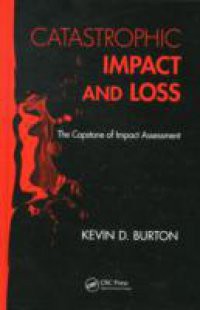The author's previous work, Managing Emerging Risk: The Capstone of Preparedness considered the notion of risk and what constitutes risk assessment. It presented scenarios to introduce readers to areas of critical thinking around probability and possibility. Six months after the book's publication, many of the scenarios came true, and other, more menacing risks emerged. Catastrophic Impact and Loss: The Capstone of Impact Assessment is the second stone to be laid in a path toward a more mindful practice of emergency management, focusing on the impacts caused by risk and offering a complete approach to measure and manage them.Providing a true understanding of what it is to be "in harm's way," this essential book details the devastation and effects that both public and private enterprise must be prepared for in the event of a catastrophe. The book examines:Impact assessment as an essential piece of information and the fundamental flaws that hinder the processThe development of the digital age and postmodernism and the five guiding principles of postmodern impact assessmentsHow to establish an impact horizon and effect a clear scope statement that includes all in-scope and out-of-scope assets and locationsProblems that occur when we fail to create impact assessments that align with internal organizational values, federal and state laws, or industry regulations-and how to use the guiding principles to address these problemsMethods for developing solid analytical models for impact assessment-exacting logical, relevant, and clear language and taxonomiesHow to address overrides and deviations based on expert opinion, cultural needs, and the application of common senseKey challenges in postmodern business impact assessment and how we can best meet those challenges by understanding the concept of the uncanny valleyReaders who master the principles in this book will better understand the link between the potential damage of an event and how information informs every decision to prepare for, respond to, mitigate, and recover.

